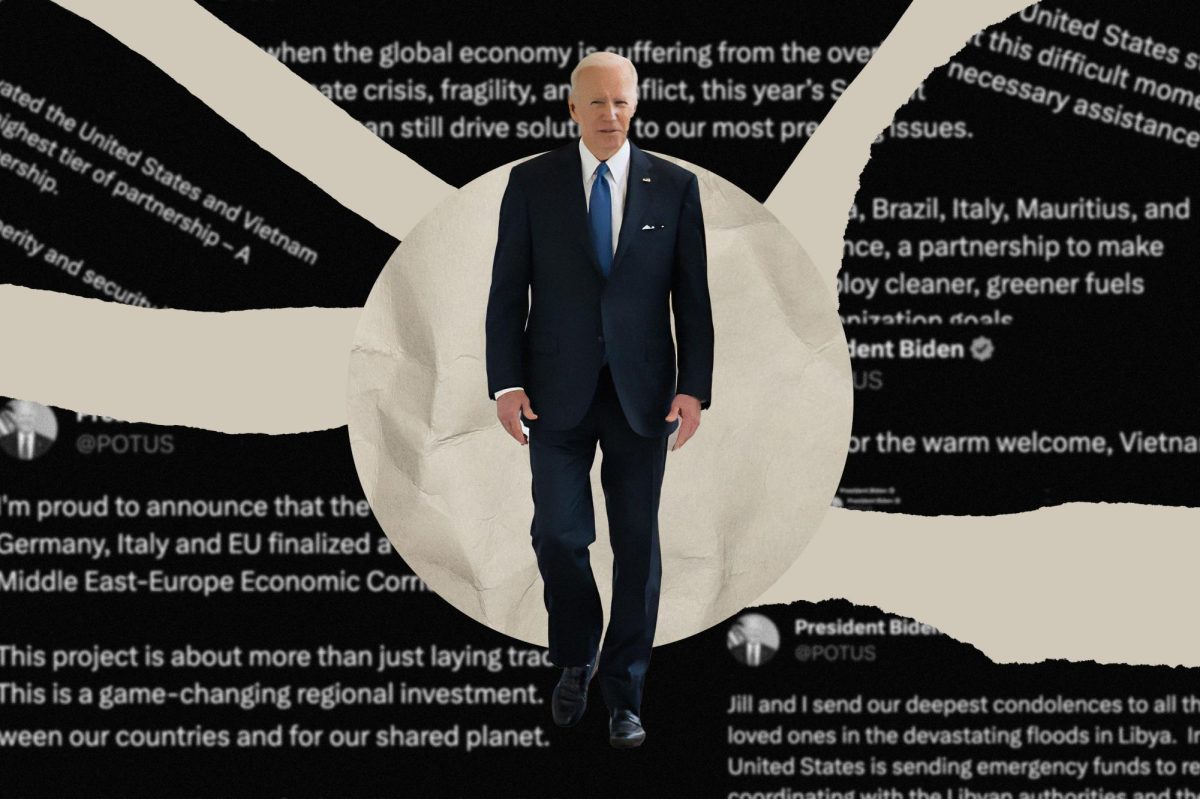As an avid social media user, I have seen firsthand how U.S. President Joe Biden’s administration utilizes social media and pop culture as a tool to promote their political strategy to their American constituents. However, this use of social media is limited when it comes to connecting with international audiences, and I believe that the same medium should be extended to cultural diplomacy and as a means to promote the United States’ international agenda.
Social media strategies work incredibly well when promoting the country’s national aims, so why not try it on a macro scale? The international audience that social media provides is incomparable, and constituents can join in to practice public diplomacy. Other nations would also have the opportunity to learn more about the United States’ efforts to maintain strong international ties and can be encouraged to work more keenly with us.
Furthermore, social media serves as an inventory of information regarding foreign policy agendas throughout the world, as constituents from many demographics can share pieces of information that they know. Therefore, the optimal approach for the Biden administration is to make the most out of social media’s broad audience to promote its foreign policy agenda in a rigorous manner, which can be achieved in several ways.
One example of successful social media use in the Biden administration’s national agenda is its approach to tackling the COVID-19 pandemic through the “We Can Do This” campaign. On the heels of the social media push, over 200 million Americans were vaccinated in Biden’s first 100 days as president, double his initial goal. American youth have been particularly impacted by Biden’s meetings with popular celebrities — such as pop artist Olivia Rodrigo in 2021 — shared on social media.
Specifically in a publicized gathering, Biden met with Rodrigo to grasp the attention of teenage Americans, as Rodrigo’s fanbase attracts a younger audience. The White House’s Instagram account posted a video of Rodrigo telling viewers that she was at the White House with Biden and Anthony Fauci, then director of the National Institute of Allergy and Infectious Diseases and chief medical advisor to the U.S. president. In the video, she addressed the importance of young people receiving the COVID-19 vaccine.
“It doesn’t matter if you’re young and healthy, getting the vaccine is about protecting yourself, your friends and your family,” Rodrigo said. This strategy was the perfect way to tap into the minds of Generation Z (people born between 1997 and 2012) to ensure that they get vaccinated because it’s “Good 4 U” — a nod to one of Rodrigo’s hit songs from her album “Sour.”
The Biden administration’s modern-day tactic of using social media has proven to be successful. I’m 17, and I am updated on my COVID-19 vaccines up to the bivalent booster dose. I would be lying if I said that social media did not play a major role in influencing my decisions regarding vaccines. In fact, as reported by Pew Research Center, 50% of American adults receive their news from social media platforms. So much for social media rotting our brains, right?
Digital diplomacy strategies have already had success for the Biden administration. For example, through platforms such as Instagram, Biden can promote diversity by shouting out cultural holidays and encouraging conversations about different backgrounds.
On March 20, the White House’s Instagram account posted a string of pictures honoring the Persian New Year, Nowruz. The photos consisted of a traditional “haft seen” table displayed at the White House, where Biden had invited guests to a Nowruz reception. The post gained more than 3,000 likes over the span of two hours and was able to easily connect with many Central Asian American communities within a second through the click of a button. Uploads such as these allow Central Asian Americans, and other minorities, to feel represented and appreciated by their country’s leader. Not only does this strategy help promote the celebrations of different cultures, it also educates Americans about the different traditions that weave the fabric of diversity in the United States.
These efforts can also have international implications. The Biden administration’s post raised awareness of the people that celebrate Nowruz and could have highlighted international communities that celebrate as well. Uzbekistan is a well-known American ally, and Nowruz is a highly commemorated holiday there. This method of cultural awareness from the U.S. could potentially contribute to the strengthening of ties between the United States and Uzbekistan because the use of social media to celebrate and teach constituents about Central Asian culture can help promote the United States’ understanding of Uzbekistan’s beloved Nowruz. In turn, this would strengthen the horizon of appreciation between the United States and Uzbekistan.
Evidently, social media is a valuable tool that can potentially support the United States’ foreign policy agenda should it be utilized as such. According to Constance Duncombe, an international relations theorist at Monash University in Melbourne, Australia, social media reflects and frames state identities in terms of how a state wishes to be recognized on the international stage. “Shifts in representational patterns communicated through social media during high-level negotiations allow realizations of political possibilities for change,” Duncombe said.
Social media can be used as a tool to promote American advancements in art and the humanities. If the Instagram accounts for the president and the White House featured more projects and research produced by the U.S. Department of State’s Bureau of Educational and Cultural Affairs (ECA) or the National Endowment for the Arts (NEA), Americans and international constituents would have the opportunity to be informed of the ECA and NEA’s impact on cultural diplomacy.
Additionally, diverse feedback on social media can lead to a more nuanced approach to promoting U.S. culture, and the opinions of U.S. constituents can be used to understand what methods will appeal most when encouraging culture as a form of diplomacy.
As a member of the teenage population, I believe that teenagers often have very strong opinions. With 97% of the adolescent population in the United States having a social media presence, we hold a cornucopia of feedback that is often overlooked. Since many of us are also brutally honest, we are not afraid to hold back on our thoughts in comment sections, overall providing the administration an honest perspective on how to improve efforts to promote advancements in arts and the humanities in the United States.
Using social media for cultural diplomacy is not a novel idea. Many countries did not hesitate when it came to utilizing these platforms to gain visibility and recognition among a global audience. A significant example is the Iranian government’s use of X, formerly known as Twitter, to promote the Joint Comprehensive Plan of Action, better known as the Iran Nuclear Deal, which was successfully instituted in 2015. Through X, representatives from the nation were able to carefully construct assertions and discussions at a time when the relationship between the United States and Iran was crippling.
“Twitter use by Iranian state representatives allowed for recognition framed through positive representations of both Iran and the United States,” Duncombe said. This was “a significant shift from previous Iranian representation-recognition dynamics.” This change in policy showed that the possibilities for progress existed before the deal took place, but were not fully realized until X was used as a diplomatic tool.
The Biden administration should utilize social media more as an instrument for cultural diplomacy. Social media has completely transformed the landscape of international audiences and can allow the administration to tap into communities from a vast range of demographics, expediently spreading the values of the United States.


